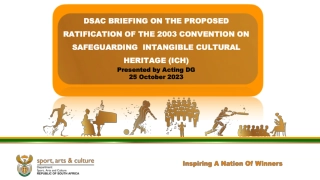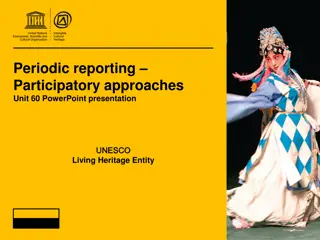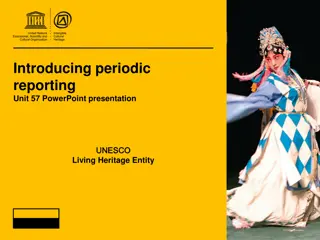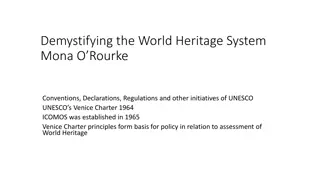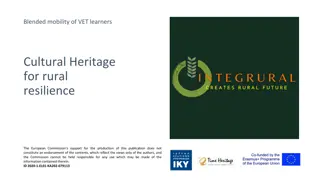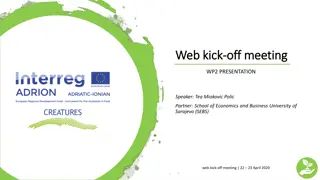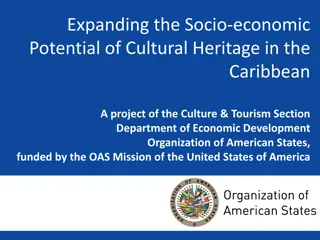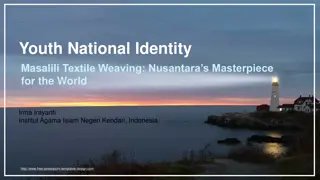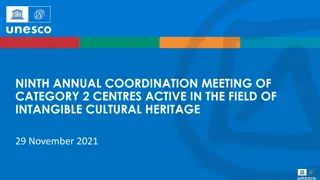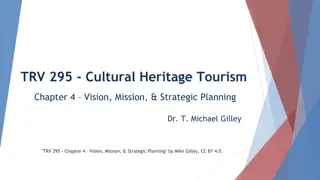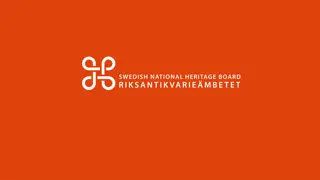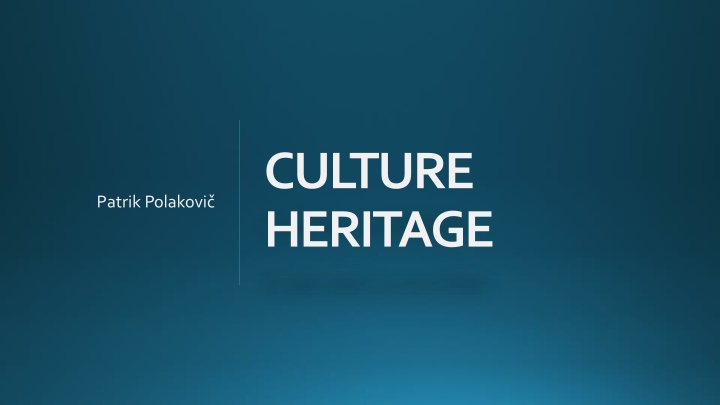
Cultural Heritage and Digitization
Explore the significance of cultural heritage encompassing tangible and intangible elements, its preservation, categories, and the pivotal role of digitization in safeguarding and sharing it for future generations. Discover how institutions like the National Education Center in Slovakia are contributing to this cause.
Download Presentation

Please find below an Image/Link to download the presentation.
The content on the website is provided AS IS for your information and personal use only. It may not be sold, licensed, or shared on other websites without obtaining consent from the author. If you encounter any issues during the download, it is possible that the publisher has removed the file from their server.
You are allowed to download the files provided on this website for personal or commercial use, subject to the condition that they are used lawfully. All files are the property of their respective owners.
The content on the website is provided AS IS for your information and personal use only. It may not be sold, licensed, or shared on other websites without obtaining consent from the author.
E N D
Presentation Transcript
CULTURE HERITAGE Patrik Polakovi
Cultural heritage Cultural heritage can be defined as a set of tangible and intangible documents, the creative activity of man and the development of human society from ancient times to the present, taking into account the historical and cultural-social value of documents. It is in society's interest to protect and preserve cultural heritage for the next generation.
Cultural heritagecategories Intangible heritage It consists of monuments that have no material essence: traditions, folklore, performing arts: songs, poems, legends, musical works, rituals, social customs, knowledge and experience related to nature and the universe or knowledge and skills necessary for traditional crafts, language, names , names, etc. To protect this category of cultural heritage, which is passed down from generation to generation, the Convention for the Protection of the Intangible Cultural Heritage was signed in 2003. In connection with the Convention, two lists of intangible cultural heritage have been established: -Representative list of the intangible cultural heritage of mankind -List of intangible cultural heritage
Material inheritance These include monuments that have a material nature, ie a creation of human activity or an object that recalls the past (buildings, jewelry, objects of everyday use, coins, etc.). We can divide it into the following subcategories: Monument Fund -organization of monuments and monument areas that is buildings, parks, statues, paintings, etc. Collection fund -institutions museum and gallery objects and objects, ie everything that forms collections in museums and galleries Archive collection -archival documents and collections located within the archives, including film and sound documents Book collection -consists of archives, documents, originals, monographs, collections and the like.
Digitization of culturalheritage The main idea of digitizing cultural heritage is to protect and preserve it for future generations, as well as to make it accessible to the general public. One of the institutions that covers this role in Slovakia is the National Education Center, which was the recipient of the national projects Central Application Infrastructure and Registry (CAIR) and Harmonization of Information Systems (HIS).


